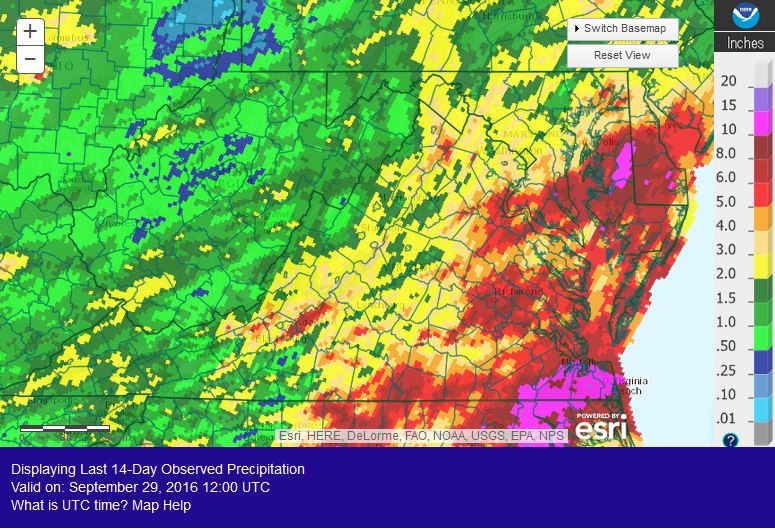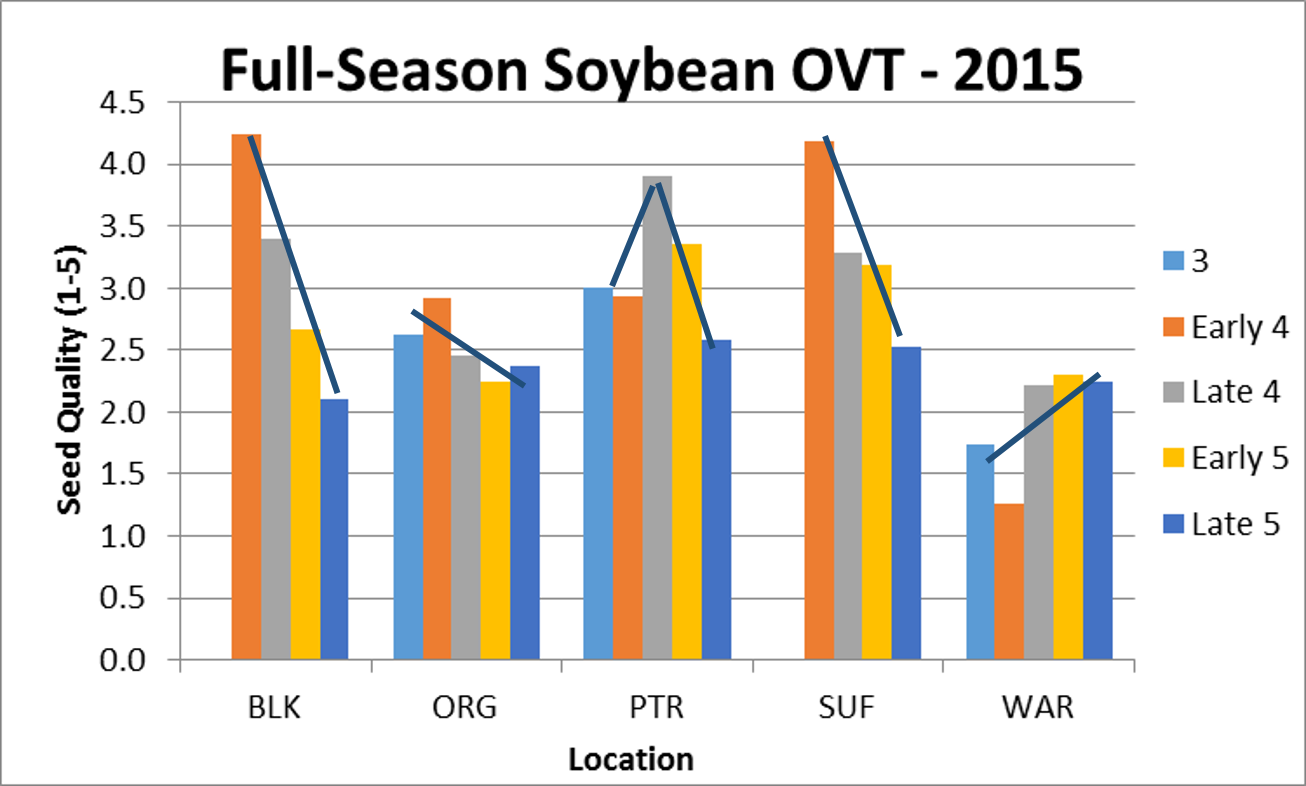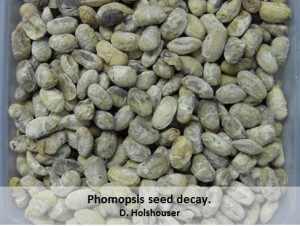The map below shows the amount of rainfall received in Virginia over the last 14 days. And the weather forecast is calling for more. While this rain may still help our double-crop soybean, early-planted early-maturing varieties will run the risk of seed quality problems if they are not harvested soon after maturity. For details of the main diseases that cause these problems, I refer to you to a blog from last fall (Oct 16) when seed quality problems were horrendous – Soybean Seed Quality Continues to Deteriorate.
For details of the main diseases that cause these problems, I refer to you to a blog from last fall (Oct 16) when seed quality problems were horrendous – Soybean Seed Quality Continues to Deteriorate.
But to review, the seed decaying diseases are worse when wet weather is combined with relatively warm conditions, like we are having now. Early-maturing varieties, especially those planted in April and early-May will have the worst seed quality because they are maturing during a warmer time of the year. I’m most concerned about maturity group (MG) III and IV soybeans; MG V’s are not yet mature. Last year, later-maturing varieties fared better than early varieties, as shown in the 2015 variety test data below. We rate seed on a scale of 1 to 5, with 1 being a perfect seed and 5 being an unsaleable product. Usually, anything averaging 2.5 or less is pretty good seed. Double-crop soybean seed quality is always better since they are maturing during a cooler time of the year.
What can you do to minimize these disease? Harvest as soon as possible. Phomopsis seed decay will only get worse the longer that you leave mature plants in the field. And pray for cooler and dryer conditions in October and November.

